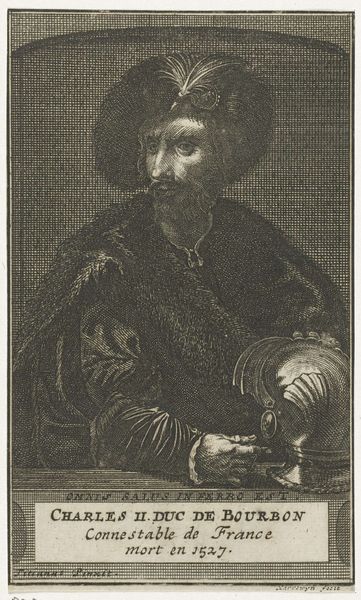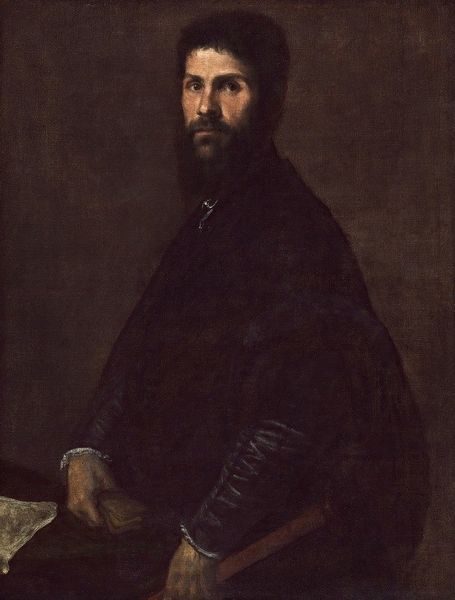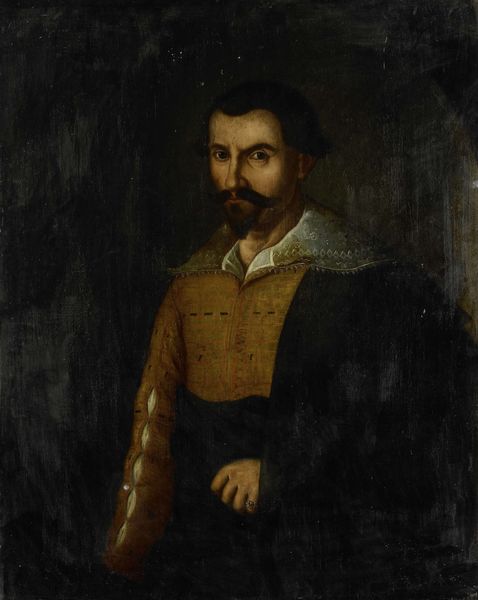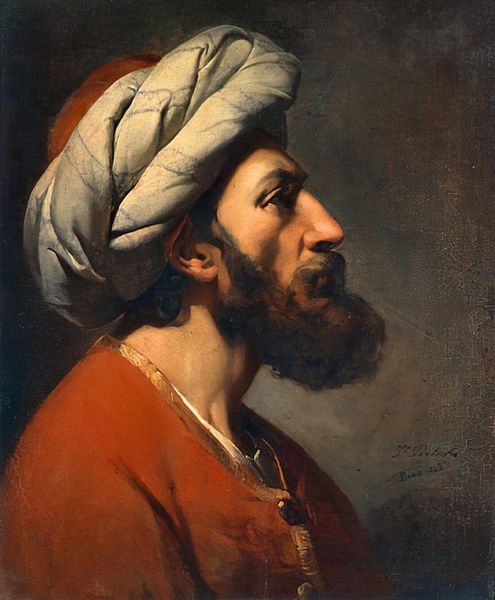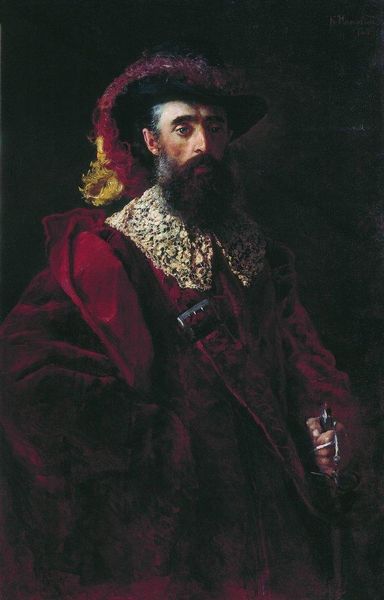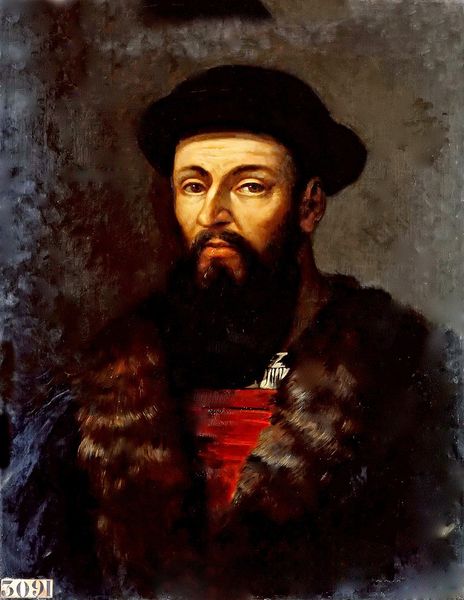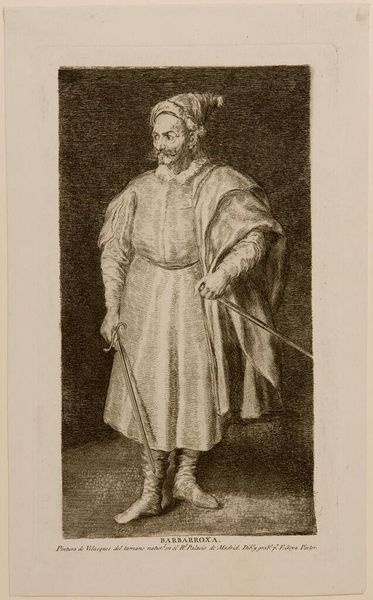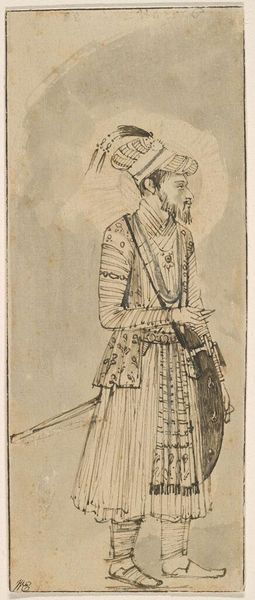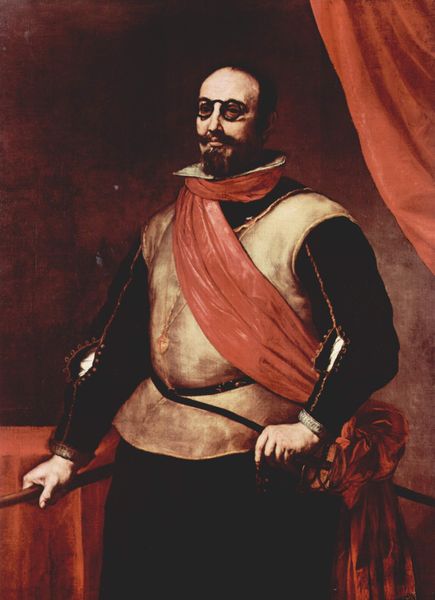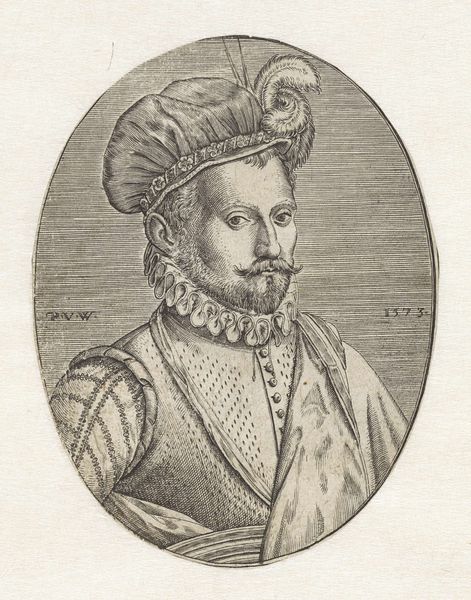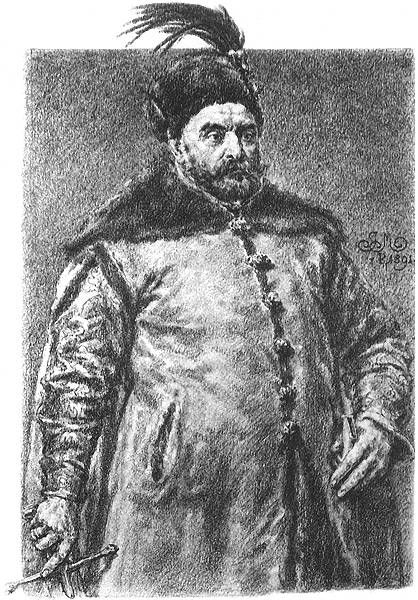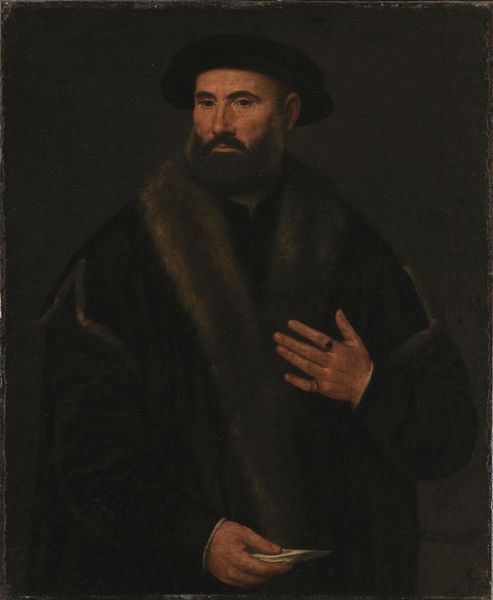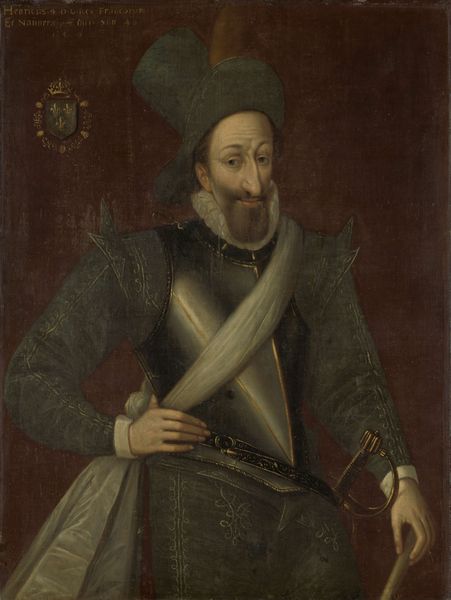
Portrait of Ippolito de Medici in a Hungarian Costume 1533
0:00
0:00
titian
Palazzo Pitti, Florence, Italy
painting, oil-paint
#
portrait
#
painting
#
oil-paint
#
figuration
#
11_renaissance
#
history-painting
#
italian-renaissance
Dimensions: 138 x 106 cm
Copyright: Public domain
Curator: Here we have Titian's "Portrait of Ippolito de Medici in a Hungarian Costume," painted in 1533. It currently resides at the Palazzo Pitti in Florence. Editor: My first impression? This is pure theatre. The mood is immediately set by the almost complete darkness surrounding the figure, only punctured by Ippolito’s rich, textured robes and his knowing gaze. It's like he's stepped out of a play and straight onto the canvas. Curator: Precisely. The painting's structure, with its pronounced chiaroscuro, is very deliberate. The dramatic lighting sculpts his face and clothing, emphasizing their materiality and suggesting power. Editor: Power, absolutely. And swagger! Look at that feathered hat. It’s almost comically large, yet he wears it with such confidence. It tells us everything about his personality. You almost expect him to burst out laughing, it is the kind of swagger only youth knows, perfectly immortalized on this oil painting! Curator: It’s not merely swagger. Consider the Hungarian costume. Titian uses this visual signifier to project an image of Ippolito as worldly and powerful, associating him with military prowess. This carefully constructed image aligns with Ippolito's ambitions. Editor: Yes, but it's also just cool, isn’t it? A bit flamboyant. You can feel the weight of the velvet, the texture of the embroidery... It is almost like I could reach out and touch him, especially because that gaze seems to be so intense. Almost playful! Curator: Observe how Titian uses colour. The deep reds and blacks aren't just decorative; they reinforce the gravity of the subject while providing an undeniable, though slightly troubling, warmth. These choices are intended to communicate very specific notions about Medici’s identity. Editor: Perhaps... For me, it communicates that Renaissance chutzpah—that sense of bold individualism that the artists were really beginning to explore during this moment in time, what do you think? The play of light, his knowing expression… Curator: Ultimately, it's Titian’s masterful orchestration of form and colour, not just the representation of the subject, that conveys so much historical information. Editor: Maybe, but as an artist, I'd also say it’s Titian's ability to bring a glimmer of his personality through, giving him the kind of eternal, yet fleetingly cheeky, character only the old masters were able to master. It is very impressive!
Comments
No comments
Be the first to comment and join the conversation on the ultimate creative platform.
